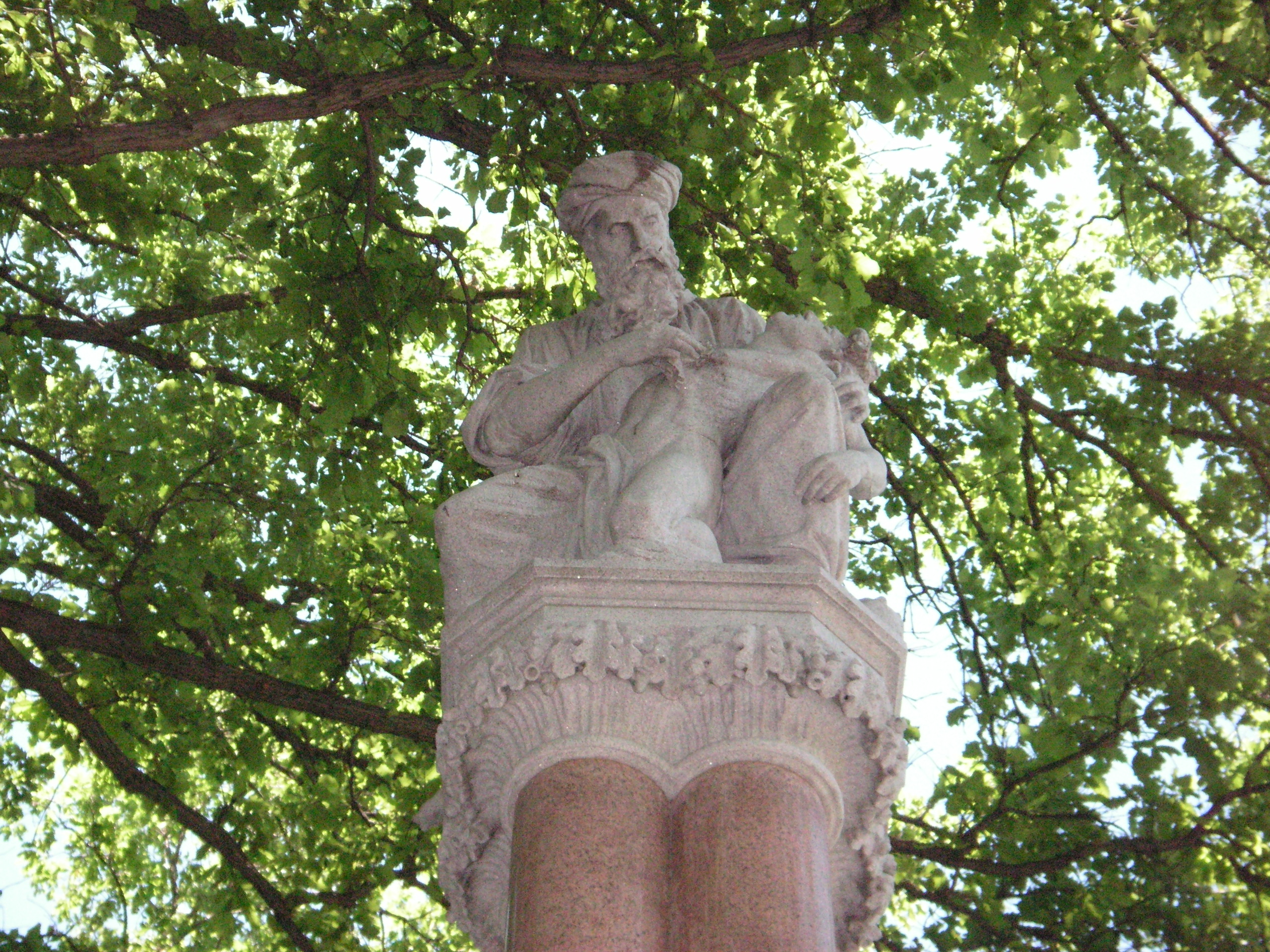Ether Monument on:
[Wikipedia]
[Google]
[Amazon]
The Ether Monument, also known as The Good Samaritan, is a statue and fountain near the northwest corner of
 The statue depicts a medical doctor in medieval Moorish-Spanish robe and turban—representing a
The statue depicts a medical doctor in medieval Moorish-Spanish robe and turban—representing a About.com, "Boston Public Garden Photo Gallery"
/ref> The anachronistic use of a Moorish doctor was probably intentional and served to avoid choosing sides in a debate that was raging at the time over who should receive credit for the first use of ether as an anesthetic. A handful of individuals had claimed credit for the discovery of anesthesia, most notably


 At the base of the statue are inscriptions explaining the significance of the discovery of the use of ether as an anesthetic. There are four inscriptions, which include biblical quotations from Isaiah 28:29 and Revelation 21:4:
At the base of the statue are inscriptions explaining the significance of the discovery of the use of ether as an anesthetic. There are four inscriptions, which include biblical quotations from Isaiah 28:29 and Revelation 21:4:
Boston
Boston (), officially the City of Boston, is the state capital and most populous city of the Commonwealth of Massachusetts, as well as the cultural and financial center of the New England region of the United States. It is the 24th- mo ...
's Public Garden, near the intersection of Arlington Street and Marlborough Street.
It commemorates the use of ether
In organic chemistry, ethers are a class of compounds that contain an ether group—an oxygen atom connected to two alkyl or aryl groups. They have the general formula , where R and R′ represent the alkyl or aryl groups. Ethers can again be ...
in anesthesia. Its design has been attributed to the Boston architect William Robert Ware
William Robert Ware (May 27, 1832 – June 9, 1915), born in Cambridge, Massachusetts into a family of the Unitarian clergy, was an American architect, author, and founder of two important American architectural schools.
He received his o ...
and to the sculptor John Quincy Adams Ward
John Quincy Adams Ward (June 29, 1830 – May 1, 1910) was an American sculptor, whose most familiar work is his larger than life-size standing statue of George Washington on the steps of Federal Hall National Memorial in New York City.
Early ye ...
. It is tall and is the oldest monument in the public garden.
Description
Good Samaritan
In most contexts, the concept of good denotes the conduct that should be preferred when posed with a choice between possible actions. Good is generally considered to be the opposite of evil and is of interest in the study of ethics, morality, ph ...
—who holds the drooping body of an almost naked man on his left knee. The doctor holds in his left hand a cloth, suggesting the use of ether that would be developed in centuries to come./ref> The anachronistic use of a Moorish doctor was probably intentional and served to avoid choosing sides in a debate that was raging at the time over who should receive credit for the first use of ether as an anesthetic. A handful of individuals had claimed credit for the discovery of anesthesia, most notably
William T. G. Morton
William Thomas Green Morton (August 9, 1819 – July 15, 1868) was an American dentist and physician who first publicly demonstrated the use of inhaled ether as a surgical anesthetic in 1846. The promotion of his questionable claim to have been th ...
and Crawford Long
Crawford Williamson Long (November 1, 1815 – June 16, 1878) was an American surgeon and pharmacist best known for his first use of inhaled sulfuric ether as an anesthetic, discovered by performing surgeries on disabled African American slaves ...
.
Inscriptions
History
Massachusetts General Hospital, where this procedure took place, is located about a 15-minute walk from the site of the monument. The operating theater at MGH where the experiment took place was renamed theEther Dome
The Ether Dome is a surgical operating amphitheater in the Bulfinch Building at Massachusetts General Hospital in Boston. It served as the hospital's operating room from its opening in 1821 until 1867. It was the site of the first public demonstr ...
. It is now a National Historic Landmark. Several books have been written about this specific event.
The monument was erected in 1868. It was restored and rededicated in 2006.
Upkeep
As an outdoor monument in an area with a harsh climate, the structure has needed regular upkeep and repair. One source of revenue for upkeep of the monument has been income from R. A. Ortega's ''Written in Granite: An Illustrated History of the Ether Monument'', which is available only by making a donation of at least $100 through the Friends of the Public Garden which goes to a fund devoted to preserving the monument for the future.References
{{Public art in Boston 1860s establishments in Massachusetts 1867 establishments in Massachusetts 1867 sculptures Boston Public Garden Fountains in Massachusetts Landmarks in Back Bay, Boston Monuments and memorials in Boston Outdoor sculptures in Boston Stone sculptures in Massachusetts